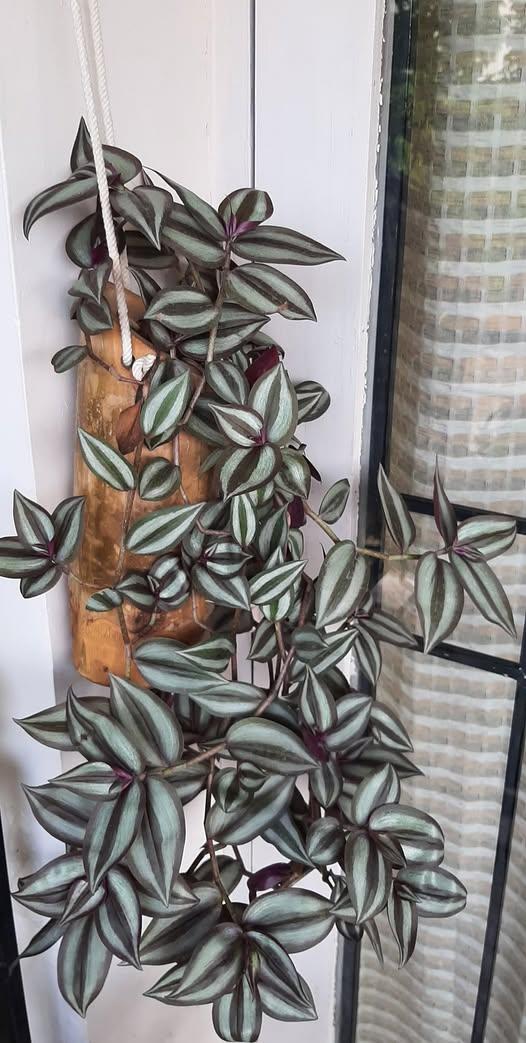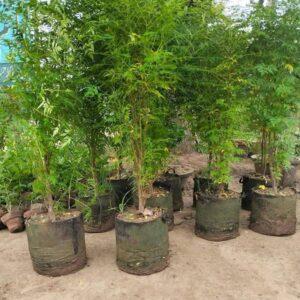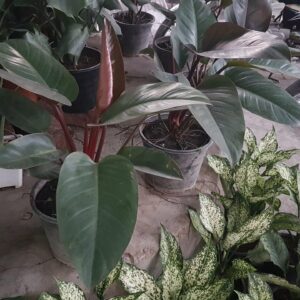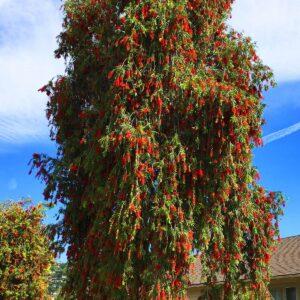Wandering Jew Wandering Jew is a common name for several species of the Tradescantia genus, widely loved for their vibrant foliage, trailing stems, and ease of care. These fast-growing plants feature green, purple, or variegated leaves, often with silver or pink stripes, depending on the variety. Popular both as houseplants and ground cover in warm climates, they’re often used in hanging baskets, window boxes, or even as sprawling accents in tropical gardens.
Wandering Jew plants are not just visually attractive—they are low-maintenance, fast-growing, and great for beginners or those looking for quick greenery.
🌸 General Description
Botanical name: Tradescantia zebrina, Tradescantia fluminensis, Tradescantia pallida (among others)
Common names: Wandering Jew, Inch Plant, Spiderwort, Purple Heart (depending on the species)
Plant type: Herbaceous perennial (often grown as an annual or houseplant in cold climates)
Growth habit: Trailing or spreading; excellent for ground cover or hanging containers
Foliage color: Green, purple, silver, or striped; leaves are typically ovate and fleshy
Flowers: Small, typically purple, pink, or white; often inconspicuous
💧 Watering Routine
Wandering Jew plants enjoy moderate moisture, especially during active growing months:
Indoor plants: Water when the top 1 inch of soil feels dry (typically once every 5–7 days).
Outdoor plants: Water 1–2 times per week depending on weather and soil drainage.
Avoid overwatering—these plants are prone to root rot if left sitting in water.
Reduce watering frequency in winter or dormancy periods.
🪴 Tip: Use pots with good drainage holes and well-draining soil. Empty saucers after watering to prevent soggy roots.
☀️ Light and Temperature Requirements
Light levels have a significant impact on the vibrancy of the plant’s foliage.
Light:
Bright, indirect sunlight is ideal.
Tolerates some direct morning sun but protect from intense afternoon sun.
In low light, foliage may fade or lose variegation.
Outdoors: thrives in dappled light or partial shade.
Temperature:
Ideal range: 18–27°C (65–80°F)
Can tolerate brief drops to 10°C (50°F) but not frost-hardy.
USDA Zones: 9–11 outdoors; otherwise, grow indoors or bring inside during cold months.
Humidity also benefits this plant—mist occasionally or use a humidity tray in dry indoor environments.
🌱 Soil and Fertilizer Needs
Soil: Use a well-draining potting mix, such as standard indoor potting soil mixed with perlite or sand.
pH preference: Neutral to slightly acidic (6.0–7.0)
Fertilizer:
Growing season (spring to early fall): Feed with a balanced liquid fertilizer (10-10-10 or 20-20-20) every 4–6 weeks.
Winter months: Fertilizer is not necessary when growth slows down.
Too much fertilizer can lead to leggy growth. Dilute the fertilizer to half strength to avoid overfeeding.
✂️ Maintenance and Pruning
Wandering Jew plants grow quickly and can become leggy without pruning.
Pinch back stems regularly to encourage fuller, bushier growth.
Remove any yellowing or dead leaves to keep the plant tidy.
If the plant becomes too leggy, take stem cuttings and replant for a fresh, compact look.
🪴 Note: If grown in hanging baskets, rotate the pot every week or two to ensure even growth.
🌿 Propagation Methods
Wandering Jew is one of the easiest plants to propagate, especially via stem cuttings.
Water propagation:
Cut 4–6 inch sections of healthy stem just below a node.
Place in a glass of clean water in indirect light.
Roots appear in 7–10 days.
Transfer to soil when roots are 1–2 inches long.
Soil propagation:
Place cuttings directly into moist potting mix.
Keep the soil slightly moist until new growth appears.
Use rooting hormone for faster success (optional).
Propagation can be done year-round but works fastest in warm weather.
⚠️ Pest and Problem Management
Common pests: Spider mites, aphids, and mealybugs—treat with insecticidal soap or neem oil.
Diseases: Root rot from overwatering; leaf spots or fungal issues in overly humid or wet conditions.
Leggy growth: Caused by insufficient light or infrequent pruning.
🌿 Popular Varieties
Tradescantia zebrina: Silver-striped leaves with purple undersides.
Tradescantia pallida (‘Purple Heart’): Bold purple foliage and small pink flowers.
Tradescantia fluminensis: Bright green or variegated leaves; faster spreading.
✅ Conclusion
Wandering Jew (Tradescantia) is a bold and beautiful plant that’s as easygoing as it is colorful. With minimal care—just enough sunlight, moderate water, and regular pruning—it can thrive indoors or outdoors, bringing vibrant foliage and cascading beauty to your space. Its fast growth and ease of propagation make it a rewarding plant for beginners and collectors alike.”





Reviews
There are no reviews yet.